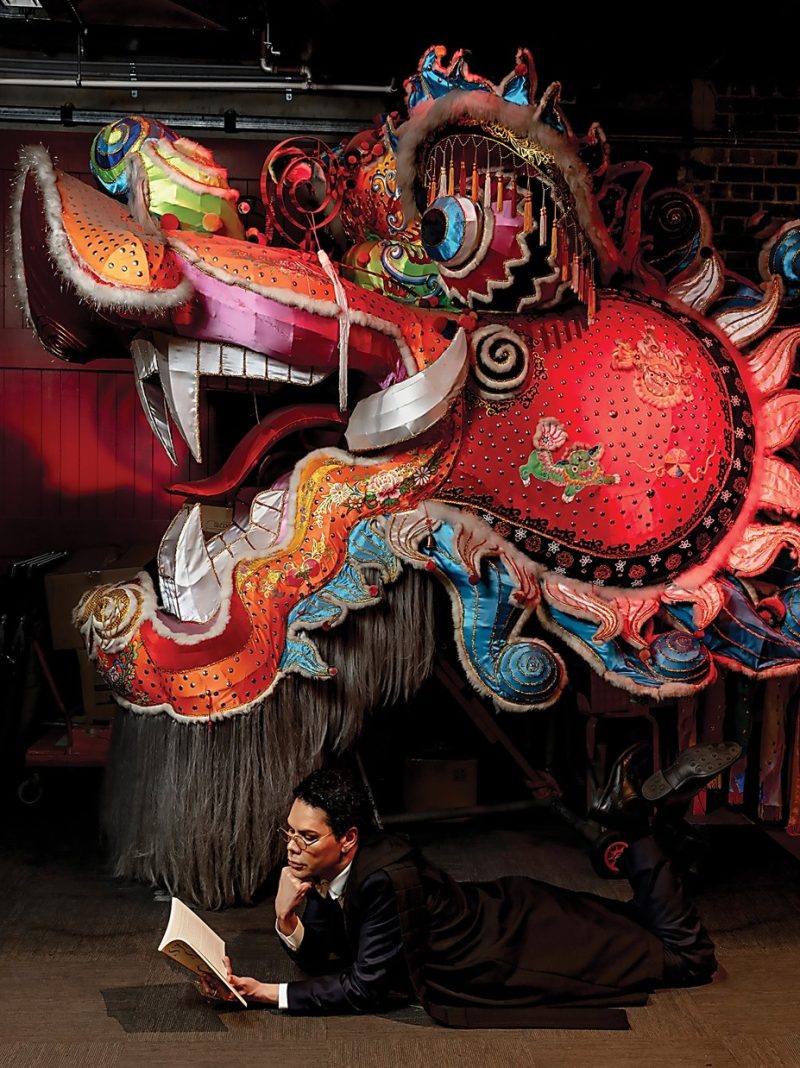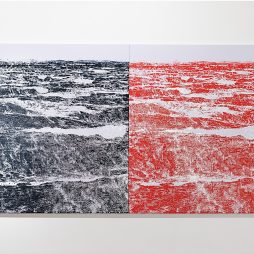REVIEW: Breaking the Silence | Our Story: Aboriginal-Chinese People in Australia
Our Story: Aboriginal-Chinese People in Australia explores the lives, art and histories of people with both Aboriginal and Chinese heritage. Featuring striking contemporary artworks and personal stories, this exhibition at the National Museum of Australia brings visibility to a long-overlooked community.

National museums serve as custodians of collective memory. They preserve, interpret, and present stories that shape a nation’s cultural identity. The National Museum of Australia (NMA) fulfills this role powerfully through Our Story: Aboriginal-Chinese People in Australia, on display in the museum’s Focus Gallery.
Though modest in scale, this exhibition and accompanying publication reveals a compelling and long-overlooked chapter in Australia’s history when Chinese immigrants and First Nations peoples were brought together in colonial Australia. It is an intergenerational story told through their descendants, a number of whom are well-known contemporary artists. Supported by the NMA and the Museum of Chinese Australian History in Victoria, the exhibition grew from a research initiative led by Melbourne-based artist and researcher Zhou Xiaoping. For over three decades, Zhou has worked closely with Aboriginal communities, building friendships and artistic collaborations. Together with a team of Aboriginal-Chinese artists, academics, and cultural practitioners, Zhou and his collaborators have shaped what Margo Ngawa Neale, the exhibition’s Indigenous curatorial adviser and Emeritus Curatorial Fellow (First Nations) at the NMA, describes as a “reclamation story.” It allows families of mixed descent, long invisible or silenced in public narratives, to finally be seen and heard.

An eight-year-old Michael Laing stands between his Aboriginal grandfather Gordon Charles Naley c.1916, and his Chinese grandfather Leung Kee c.1930s, 2025, digital photomontage, paper, 200 x 200 cm. Photo archive of Michael Laing
“They had enough trouble being Aboriginal, let alone being Chinese Aboriginal,” Neale explains. These communities have often lived at the margins of multiple identities, navigating complex social and cultural terrains. This exhibition offers an important step toward visibility, recognition, and healing.
Structured around five sections and four interconnected themes—Connection, Identity, Family, and Prosperity—the exhibition weaves together recorded video interviews, archival photographs, and contemporary artworks. By presenting personal and intergenerational stories through a range of visual and oral media, the curatorial team has created a deeply intimate and multidimensional space in which the narrative arc moves from reflection on cultural origins and connection, to questions of belonging, resilience and aspiration. The curatorial focus on cultural connection invites viewers to reflect on the intersections between Aboriginal and Chinese identities both historically and in the present.
Seven Aboriginal-Chinese artists are featured in the exhibition: Vernon Ah Kee, Gordon Hookey, Lloyd Gawura Hornsby, Jenna Lee, Damien Shen, Christian Thompson, Jason Wing, and one Australian-Chinese artist, Zhou Xiaoping. Together, they present seventeen works across diverse forms including painting, drawing, photography, digital imagery and installation. Each artist explores ways of reconciling with their cultural heritage and expresses their perspectives through a personal and contemporary lens.
Near the entrance to the exhibition is a striking photographic image: Zhou Xiaoping and Martu artist and filmmaker Curtis Taylor facing one another in silent exchange. Taken in Zhou’s Melbourne studio following their participation in a cultural ceremony of the Bidyadanga Aboriginal community, the photo Recognized, 2020, embodies the theme of connection. “Communication does not require words,” Zhou explains. This silent understanding becomes a metaphor for cross-cultural solidarity and mutual respect.

Vernon Ah Kee, Unwritten (108 Portrait number 15), 2019, charcoal, canvas, 60 x 60 cm
Another powerful contribution comes from Vernon Ah Kee. His charcoal drawing Unwritten (108 Portrait #15), 2019, portrays a face in a quiet, meditative state. In contrast to his more confrontational work Austracism, 2003, hanging nearby, this piece speaks with subdued strength. Part of his Unwritten series, it critiques how the dominant White Australian lens distorts representations of cultural otherness. Reflecting on his own heritage, Ah Kee notes, “Because I was only ever regarded as Aboriginal, it never occurred to me that I could explore or exercise any other identity. . . . But this has never been a denial of my Chineseness.”

Jason Wing, Serpent People (Boy with Snake Belly), 2024, acrylic spray paint, canvas, 122 x 91cm
Throughout the exhibition, artists blend Chinese visual traditions with First Nations perspectives and contemporary forms. Lloyd Gawura Hornsby’s New Beginnings, 2024; Gordon Hookey’s Dragonserpent, 2024; and Jason Wing’s Serpent People (Boy with Snake Belly), 2024, all explore mythological and symbolic connections. Christian Thompson’s House of Gold, 2024, offers a performative take on heritage and transformation, while Jenna Lee’s illuminated works To Light Up: Memories and To Light Up: Stories, both 2024, evoke remembrance and continuity. Damien Shen’s Tut, Yee, Sahm, 2019, reflects on ancestral relationships and cultural inheritance.

Christian Thompson, House of Gold, 2024, photograph, 90 x 60 cm (#3 of triptych)
Zhou Xiaoping’s own contribution, Chinariginal, 2024, captures the spirit of cross-cultural collaboration he has fostered for decades. It embodies a shared artistic language that honours both Aboriginal and Chinese traditions.
At its core, Our Story confronts what anthropologist W.E.H. Stanner famously described as “the Great Australian Silence.” In his 1968 Boyer Lecture, Stanner criticised the systematic exclusion of Aboriginal people from the national narrative. As Neale points out in the exhibition’s wall text, “Fifty years on, it now applies to the Chinese part of our history.” The story of Aboriginal-Chinese contact, manifest by intermarriage, cooperation, and mutual survival, has long remained in the shadows.
By breaking that silence, Our Story marks a cultural turning point. It challenges binary thinking and calls for a more inclusive and nuanced understanding of identity. As Neale eloquently concludes, exhibitions like this are “the dominoes that will set up the chain reaction to incrementally fill the silence.”
Exhibition
Our Story: Aboriginal-Chinese People in Australia
10 April 2025 – 27 January 2026
National Museum of Australia, Canberra
Exhibition Catalogue: Xiaoping Zhou (ed), Our Story: Aboriginal Chinese People in Australia, 2025, Museum of Chinese Australian History, Victoria
From May 2026 to May 2027, three exhibitions will be held in Guangdong and Fujian provinces, in China, the regions where the ancestors of these families originally came from. The first exhibition will open at the Guangzhou Library on 1 May 2026.
Images courtesy of the artists, National Museum of Australia, Canberra and Michael Laing
Dr Lansheng Zhang is an honorary research fellow at the China Study Centre, University of Sydney
This article was first published in Artist Profile Issue 72










